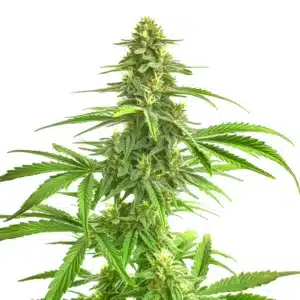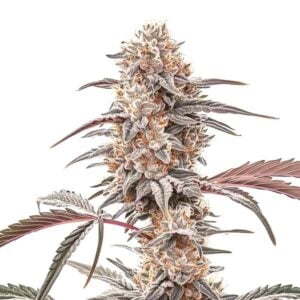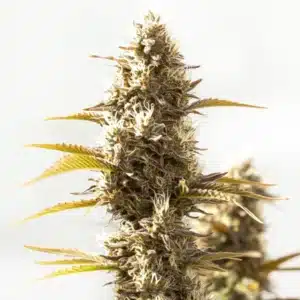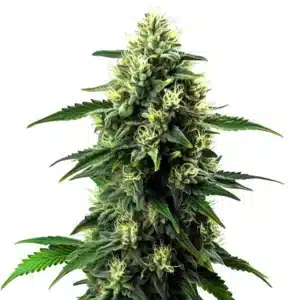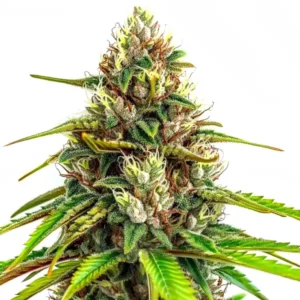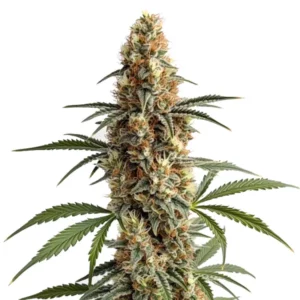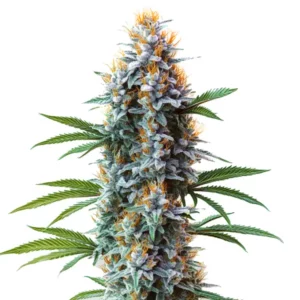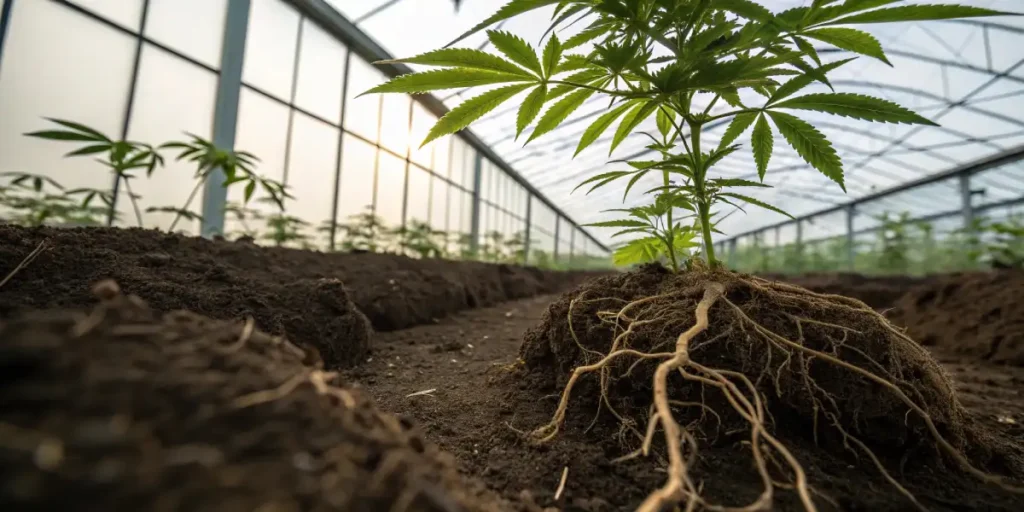
How Do Cannabis Roots Grow?
Cannabis roots are the unsung heroes of plant growth. They anchor the plant, absorb nutrients, and play a critical role in overall health. A fundamental principle of cannabis growth is that the plant can only grow upwards as much as its root system can grow downwards. A massive plant requires a massive root system to support it. Understanding how roots grow can help you cultivate healthier plants.
The root system begins its growth right after germination. As the seed sprouts, the primary root, or taproot, emerges first. From this, secondary roots develop, creating a web that increases the plant’s ability to absorb nutrients.
Recommended Strains
Cannabis Root Development Stages
The process begins as soon as the seed germinates. The taproot is the first to appear, followed by secondary roots branching off. This phase is vital as the roots establish themselves, setting the foundation for the plant’s health and yield. During later stages, roots may form mycorrhizal associations, where beneficial fungi establish a symbiotic relationship, further enhancing nutrient absorption.
How Cannabis Roots Absorb Nutrients
Roots absorb nutrients through tiny hair-like structures called root hairs, which increase the surface area of the root system. Nutrients are dissolved in water, and the roots pull in this nutrient-rich water. The presence of beneficial bacteria and fungi in the soil can also aid this process by decomposing organic material.
Promos & Deals
Cannabis Root System Growth Patterns
Root system growth patterns vary depending on the strain and growing conditions. Some strains, like Critical Daddy Purple, have robust taproots that penetrate deeply. Others might have a shallower root system. Environmental factors such as light and temperature also influence growth. Roots tend to grow more vigorously when conditions are warm and the soil is aerated.
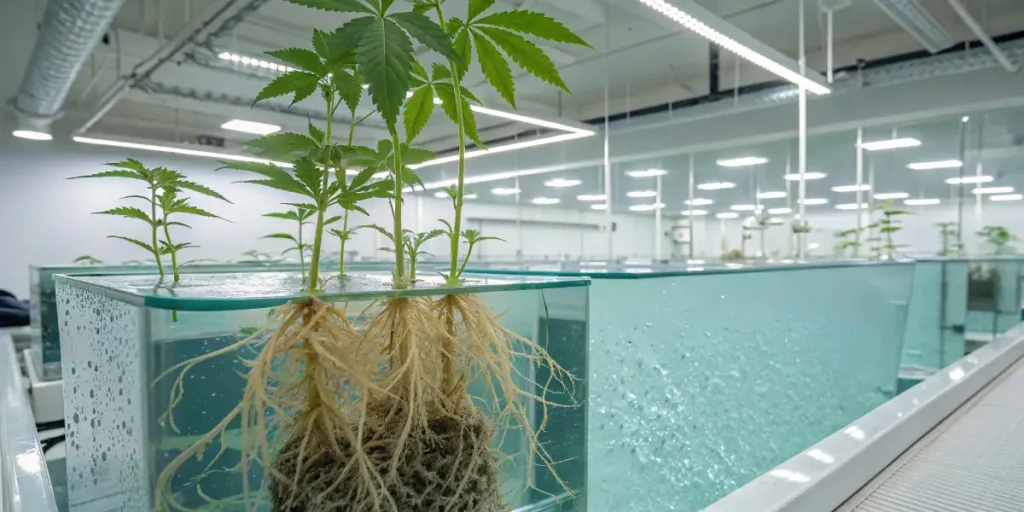
Effects of Soil Type on Cannabis Roots
The type of soil you use can significantly impact how roots grow. The pH of the soil is fundamental for rapid and healthy root growth. The ideal range for cannabis is between 6.0 and 7.0. It is best to avoid or amend soils outside this range, as an improper pH will negatively affect the roots. Loamy soil, a mix of sand, silt, and clay, is often considered ideal as it offers excellent drainage and nutrient retention.
Impact of Watering on Cannabis Root Growth
Watering practices can make or break your root growth. Overwatering is a common mistake that leads to root rot, as it cuts off the roots’ oxygen supply. Proper watering encourages roots to grow deeper, seeking out moisture and fortifying the plant’s stability.
Protecting the Root Zone
A simple and effective way to protect the root system is by applying a layer of mulch. Covering the surface of the soil with a material like bark chips or even a layer of plastic protects the roots from extreme temperature changes and reduces moisture evaporation.
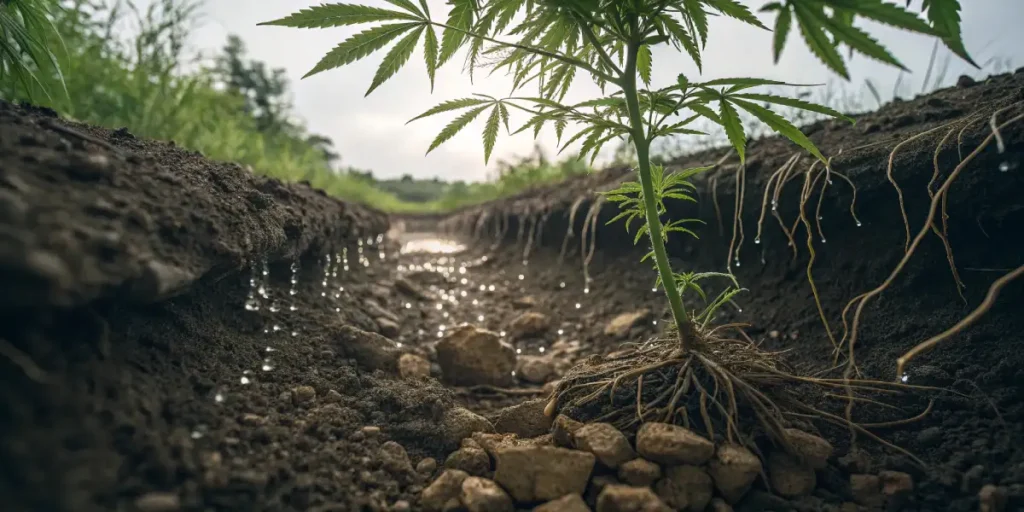
FAQ Section
How do I know if my cannabis roots are healthy?
Healthy cannabis roots are typically white or light tan and firm. If they are dark, slimy, or have a foul smell, it’s a sign of root rot. To inspect the entire root system of a potted plant, let the soil dry out completely. Then, you can carefully turn the pot over and slide the entire root ball out to get a close look. It is critical not to expose the roots to direct light for a long time, as this can damage or kill them. Vigorous top-side growth is also a good indicator that your roots are functioning well.
What are the signs of nutrient deficiencies in cannabis roots?
Nutrient deficiencies often manifest in the leaves first (yellowing, stunted growth). If deficiencies persist, roots may become brittle or discolored. Addressing these issues early is crucial.
Can I trim cannabis roots?
Root trimming is a technique used primarily for root-bound plants, often in bonsai or when maintaining mother plants. It should be done carefully to avoid stressing the plant.
How do cannabis roots grow in hydroponic systems?
In hydroponic systems, roots grow directly in nutrient-rich water. The absence of soil allows for faster and more free growth, but requires careful management of water quality and nutrient levels.
What is the impact of root-bound plants?
Root-bound plants occur when roots outgrow their container. The roots circle the pot, leading to restricted growth and poor nutrient uptake. Repotting into a larger container is necessary to give the roots space to expand.


